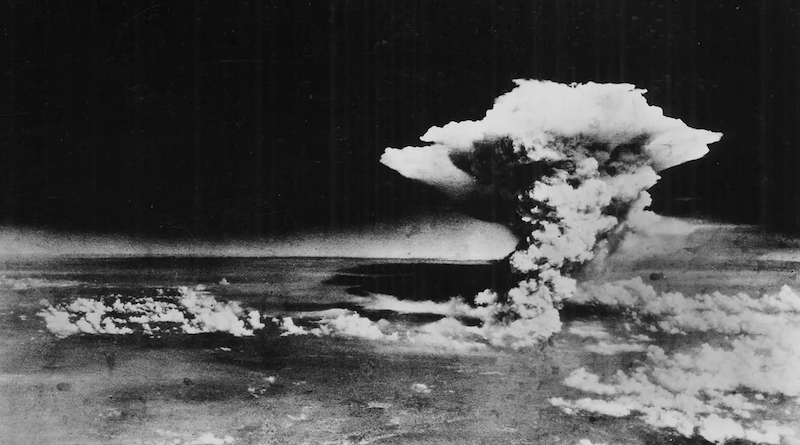Will ‘Oppenheimer’ change our views on nuclear weapons?
By Tara Sonenshine, Professor of Public Diplomacy at The Fletcher School
Movie fans are coming out in droves to see “Oppenheimer,” Christopher Nolan’s epic film centered around one of the chief scientists behind the construction of the atom bomb. After five days of release, theaters were already reporting milestone attendance, with ticket sales surpassing $100 million.
For those who have not seen the film, the three-hour biopic is about the famed physicist who worked on the top-secret Manhattan Project that developed the atomic bombs dropped on the Japanese cities of Hiroshima and Nagasaki in August 1945.
Thousands of scientists, including the theoretical physicist J. Robert Oppenheimer, took part in the Manhattan Project, often while they and their families were lodged at secret military bases in remote locations.
So, is the film accurate — and does it matter?
According to Oppenheimer’s grandson, Charles, the biopic, based on the Pulitzer Prize-winning 2005 biography, “American Prometheus: The Triumph and Tragedy of J. Robert Oppenheimer,” is mostly historically accurate.
Details of the movie that have been independently corroborated include that Oppenheimer came to regret the decision to use the bomb and that President Truman had no use for the scientist’s complaints after the fact.
Beyond the 200,000 estimated deaths at Hiroshima and Nagasaki were countless with severe burns.
Films mirror life. Sadly, despite many calls for global disarmament, an arms race followed World War II, principally between the United States and the Soviet Union. Today, the world is still awash in nuclear weapons.
According to the Stockholm International Peace Research Institute (SIPRI) an independent international organization dedicated to researching conflict and arms control, we have nine nuclear-armed states: the United States, Russia, the United Kingdom, France, China, India, Pakistan, the Democratic People’s Republic of Korea (North Korea) and Israel.
“Of the total global inventory of an estimated 12,512 warheads in January 2023,” says SIPRI, “about 9,576 were in military stockpiles for potential use. Of those, an estimated 3,844 warheads were deployed with missiles and aircraft, and around 2000 — nearly all of which belonged to Russia or the USA — were kept in a state of high operational alert, meaning that they were fitted to missiles or held at airbases hosting nuclear bombers. America and Russia together possess almost 90 percent of all nuclear weapons.”
Countries continue to modernize their nuclear arsenals, and several deployed “new nuclear-armed or nuclear-capable weapon systems” in 2022.
“SIPRI’s estimate of the size of China’s nuclear arsenal increased from 350 warheads in January 2022 to 410 in January 2023, and it is expected to keep growing. Depending on how it decides to structure its forces, China could potentially have at least as many intercontinental ballistic missiles (ICBMs) as either the USA or Russia by the turn of the decade.”
Arms control agreements came about after the Cold War, but Russian President Vladimir Putin has rattled the nuclear saber many times, threatening to pull out of agreements and use tactical nuclear weapons in Ukraine.
And we face the prospect of conflict between Taiwan and China at a time when China is growing its nuclear arsenal.
The film “Oppenheimer,” like all soft-power projects, is meant to educate and inform audiences and to remind us how much damage and destruction the atomic weapon did in 1945. Our nuclear weapons today are much more powerful than the Manhattan Project’s atomic bomb.
It is well documented that when he met with President Harry S. Truman in October 1945, after the bombs had fallen, Oppenheimer said, “Mr. President, I feel I have blood on my hands.”
Now it falls to viewers to decide what we do today about nuclear weapons to avoid a similar situation, so that we don’t create a scientific capability that gets used out of fear and politics with the result that hundreds of thousands of people die.
(This post was republished from The Hill.)

